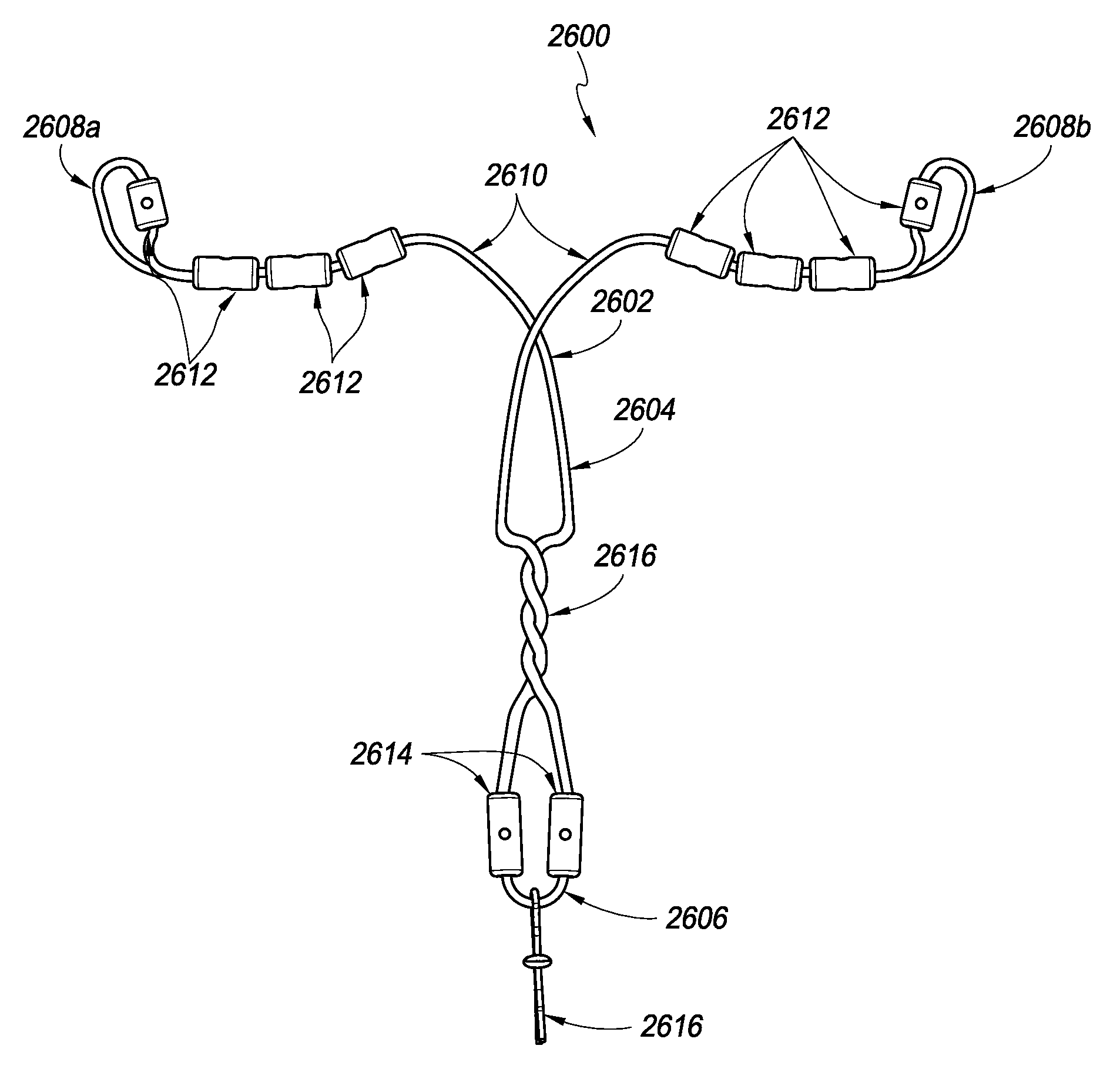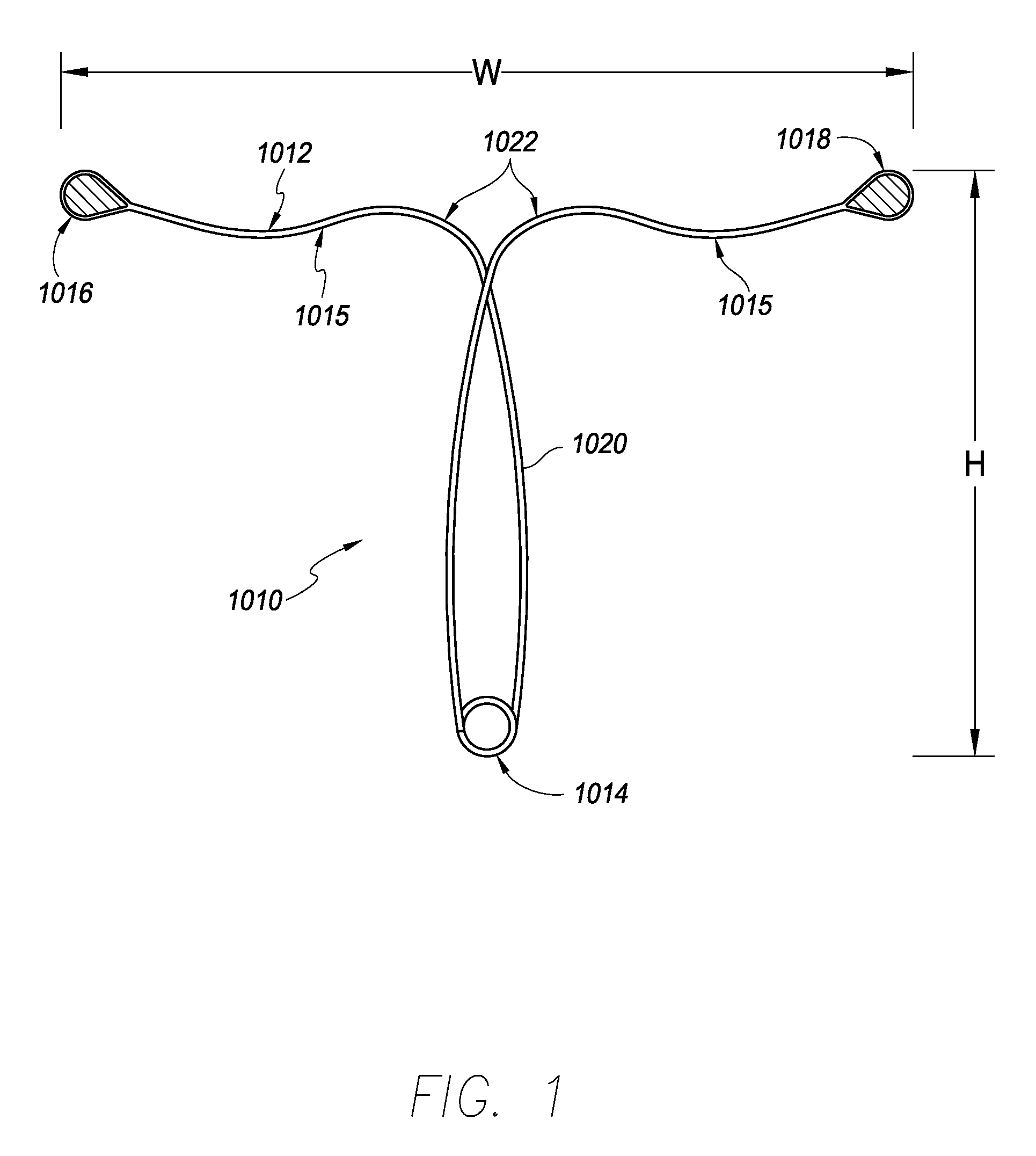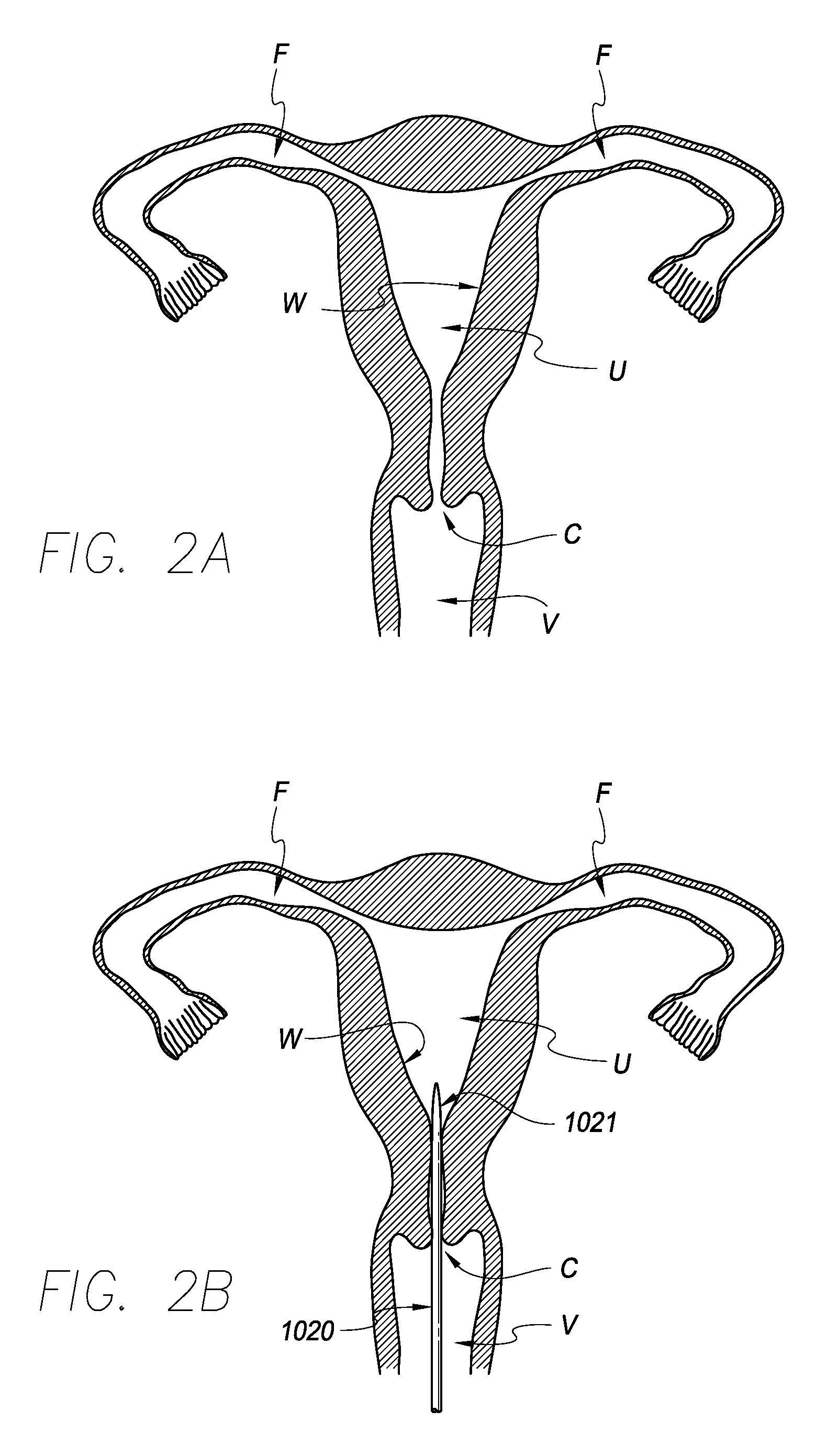Intrauterine contraceptive device
a contraceptive device and intrauterine technology, applied in the field of medical devices, can solve the problems of abnormal bleeding and pain, many currently available iuds are at least slightly uncomfortable and/or difficult to deliver into the uterus, and both have common side effects, so as to facilitate the delivery of an iud, reduce the migration and expulsion of inferiors, and facilitate the effect of delivering an iud
- Summary
- Abstract
- Description
- Claims
- Application Information
AI Technical Summary
Benefits of technology
Problems solved by technology
Method used
Image
Examples
Embodiment Construction
[0046]Referring to FIG. 1, in one embodiment, a contraceptive intrauterine device (IUD) 1010 may include a shape memory, elongate member 1012 and two tissue contact members 1016, 1018 disposed at opposite ends of elongate member 1012. Elongate member 1012 may include a spring portion 1014, typically but not necessarily disposed approximately at a midpoint between the opposite ends of elongate member 1012, an expandable middle portion 1020, two arms 1015 extending from middle portion 1020, and bends 1022 between middle portion 1020 and arms 1015. All or a part of each tissue contact member 1016, 1018 may comprise a tissue contact surface, in other words, a surface that typically contacts an inner wall of a uterus when IUD 1010 is deployed in the uterus.
[0047]Elongate member 1012 is manufactured from a resilient, shape memory material, such as but not limited to Nitinol (nickel titanium alloy), spring stainless steel, other shape memory metal alloys, shape memory polymers, or the like...
PUM
 Login to View More
Login to View More Abstract
Description
Claims
Application Information
 Login to View More
Login to View More - R&D
- Intellectual Property
- Life Sciences
- Materials
- Tech Scout
- Unparalleled Data Quality
- Higher Quality Content
- 60% Fewer Hallucinations
Browse by: Latest US Patents, China's latest patents, Technical Efficacy Thesaurus, Application Domain, Technology Topic, Popular Technical Reports.
© 2025 PatSnap. All rights reserved.Legal|Privacy policy|Modern Slavery Act Transparency Statement|Sitemap|About US| Contact US: help@patsnap.com



